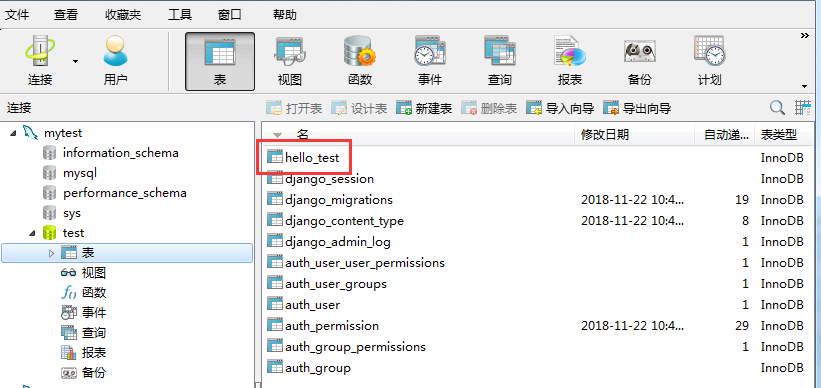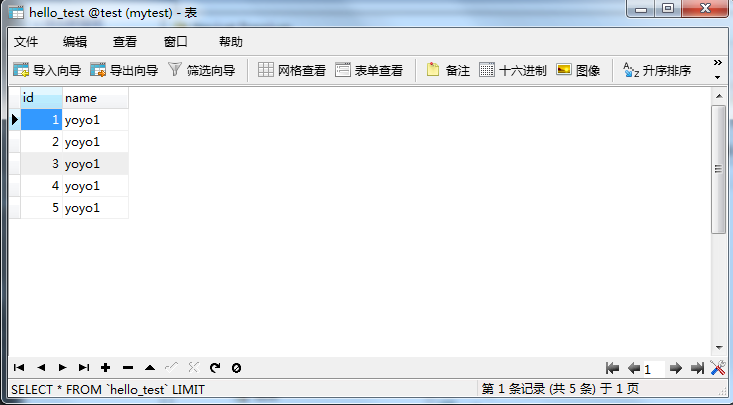前言
Django 对各种数据库提供了很好的支持,包括:PostgreSQL、MySQL、SQLite、Oracle。本篇以mysql为例简单介绍django连接mysql进行数据操作
Django连mysql需要安装驱动mysqlclient
mysqlclient安装
先要安装数据库驱动mysqlclient,使用pip安装就行
pip install mysqlclient
copying MySQLdbconstantsFLAG.py -> buildlib.win-amd64-3.6MySQLdbconstants
copying MySQLdbconstantsREFRESH.py -> buildlib.win-amd64-3.6MySQLdbconstants
running build_ext
building '_mysql' extension
error: Microsoft Visual C++ 14.0 is required. Get it with "Microsoft Visual C++ Build Tools": http://landinghub.visualstudio.com/visual-cpp-build-tools
----------------------------------------
Command "e:python36python.exe -u -c "import setuptools, tokenize;__file__='C:\Users\dell\AppData\Local\Temp\pip-install-trc0p4gc\mysqlclient\setup.py';f=getattr(tokenize, 'open', open)(__file__);code=f.read().replace('
', '
');f.close();exec(compile(code, __file__, 'exec'))" install --record C:UsersdellAppDataLocalTemppip-record-ulwogpctinstall-record.txt --single-version-externally-managed --compile" failed with error code 1 in C:UsersdellAppDataLocalTemppip-install-trc0p4gcmysqlclient这里我安装的时候出现了报错:“Microsoft Visual C++ 14.0 is required. Get it with "Microsoft Visual C++ Build Tools": http://landinghub.visualstudio.com/visual-cpp-build-tools” 打开报错给的地址404
解决办法,指定1.3.10版本安装
pip install mysqlclient==1.3.10
C:Usersdell>pip install mysqlclient==1.3.10
Collecting mysqlclient==1.3.10
Downloading https://files.pythonhosted.org/packages/c8/e0/e38c1fc71355bbc60e89401674bc0190f39a207f0235bb92b7e7b09948d0/mysqlclient-1.3.10-cp36-cp36m-win_amd64.whl (1.4MB)
100% |████████████████████████████████| 1.4MB 466kB/s
Installing collected packages: mysqlclient
Successfully installed mysqlclient-1.3.10django配置数据库
settings.py 文件中找到 DATABASES 配置项, django默认连接sqllite。ENGINE:是指连接数据库驱动的名称,有以下几种情况:
- django.db.backends.postgresql 连接 PostgreSQL
- django.db.backends.mysql 连接 mysql
- django.db.backends.sqlite3 连接 sqlite
- django.db.backends.oracle 连接 oracle
这里我们连接mysql需要账户密码,也就是之前安装mysql的root用户名,和自己设置的密码,NAME是数据库的名称,连接配置如下:
DATABASES = {
'default': {
'ENGINE': 'django.db.backends.mysql', # 或者使用 mysql.connector.django
'NAME': 'test',
'USER': 'root',
'PASSWORD': 'yoyo',
'HOST':'localhost',
'PORT':'3306',
}
}创建表,同步到mysql
类名代表了数据库表名,且继承了models.Model,类里面的字段代表数据表中的字段(name),数据类型则由CharField(相当于varchar)、DateField(相当于datetime), max_length 参数限定长度。
# models.py
from django.db import models
# Create your models here.
class Test(models.Model):
name = models.CharField(max_length=20)先创建表结构,在数据库里面新增一些表
python manage.py migrate
D:web_djohelloworld>python manage.py migrate
Operations to perform:
Apply all migrations: admin, auth, contenttypes, hello, sessions
Running migrations:
Applying contenttypes.0001_initial... OK
Applying auth.0001_initial... OK
Applying admin.0001_initial... OK
Applying admin.0002_logentry_remove_auto_add... OK
Applying admin.0003_logentry_add_action_flag_choices... OK
Applying contenttypes.0002_remove_content_type_name... OK
Applying auth.0002_alter_permission_name_max_length... OK
Applying auth.0003_alter_user_email_max_length... OK
Applying auth.0004_alter_user_username_opts... OK
Applying auth.0005_alter_user_last_login_null... OK
Applying auth.0006_require_contenttypes_0002... OK
Applying auth.0007_alter_validators_add_error_messages... OK
Applying auth.0008_alter_user_username_max_length... OK
Applying auth.0009_alter_user_last_name_max_length... OK
Applying hello.0001_initial... OK
Applying hello.0002_auto_20181122_1025... OK
Applying hello.0003_auto_20181122_1033... OK
Applying sessions.0001_initial... OK打开数据库,会发现多了一些表名称,hello_test就是上一步新建的表

接着让 Django 知道我们在我们的模型有一些变更
python manage.py makemigrations hello
D:web_djohelloworld>python manage.py makemigrations hello
No changes detected in app 'hello'再创建hello这个app应用的表结构
python manage.py migrate hello
D:web_djohelloworld>python manage.py migrate hello
Operations to perform:
Apply all migrations: hello
Running migrations:
No migrations to apply.操作数据库
在settings.py同一目录新建一个testdb.py文件
# -*- coding: utf-8 -*-
from django.http import HttpResponse
from hello.models import Test
# 数据库操作
def testdb(request):
test1 = Test(name='yoyo1')
test1.save()
return HttpResponse("数据库hello_test添加name成功!看去看看吧")urls.py配置访问地址
from django.conf.urls import url
from django.urls import re_path, path
from . import view, testdb
urlpatterns = [
url(r'^testdb$', testdb.testdb),
]浏览器打开:http://127.0.0.1:8000/testdb 访问一次,数据库里面就会新增一条数据

查看数据库hello_test会新增数据
